Planting skills of lilies
Lilium belongs to the genus Lilium of Liliaceae. Excellent in both medicine and food, bulbs are used for food or medicine. It has the function of nourishing yin and moistening the lungs, clearing the heart and calming the mind. Lily is fond of warm and humid environment and poor growth in high temperature areas. Like dry, afraid of waterlogging.
Too high soil moisture causes the bulb to rot and die. The requirements of the soil are not strict, but in the deep, fertile and loose sandy loam, the bulb is white and fleshy. It grows well on the half-yin and half-yang, slightly acidic soil.
Clayey soil is not suitable for cultivation. The root system is sturdy and well-developed and tolerant to fertilizer. After being unearthed in spring, sufficient nitrogen nutrition and sufficient phosphorus and potassium fertilizer, N:P:K=1:0.8:1, fertilizer should be mainly organic fertilizer. Avoid continuous cropping, rotation in 3-4 years, legume and gramineous crops are better in previous cropping.
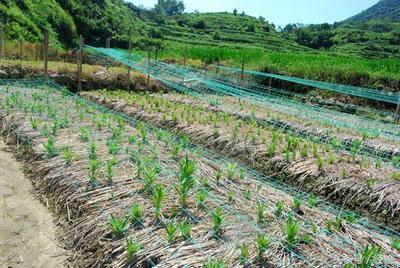
1. Land selection and preparation:
The sandy loam with fertile soil, high topography, good drainage and loose soil should be selected for cultivation. Combined with soil preparation, 2000 kg of organic fertilizer per mu plus 40-50 kg of Yangfeng compound fertilizer was used as base fertilizer. 50-60 kg of lime (or 50% 0.6Kg) was applied per mu for soil disinfection. Then fine rake flat to make a width of 1.3m each or flat border, the border ditch width 30cm, around a deeper drainage ditch, good drainage.
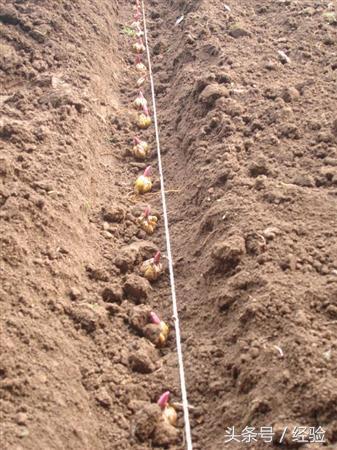
2. Planting method of lily:
Lilies are mainly propagated by bulbs. The bulbs with tight clasping scales, white shape, no damage and no diseases and insect pests were selected as species.
The lily seeds and stems were soaked in 70% methyl topiramate, or carbendazim or agricultural streptomycin solution for 15-30 minutes for disinfection, dried and seeded. The appropriate time is from late September to October. On the finished border, the horizontal trench is opened according to the row spacing 25cm, the deep ditch 12cm, and then, every 15cm (plant spacing) is placed into a small bulb, the top is up, covered with fine soil, covered with soil, a layer of fallen leaves or straw is added to prevent and moisturize, gently press the leaves and grass, and remove them when sprouting. There are 1-15000 plants per mu and 150,200 / kg per mu.
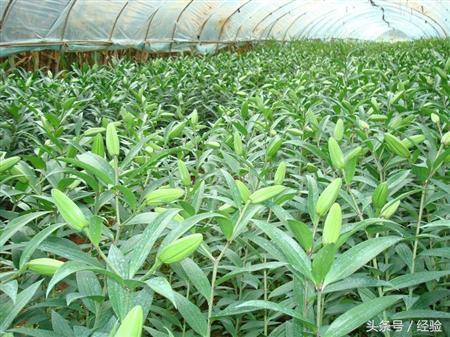
3. Lily field management:
(1) Prophase management. In winter, select sunny days for ploughing, drying topsoil, preserving soil moisture and heat preservation. Loosen the soil and weed before spring emergence, increase the ground temperature, promote the early development of seedlings, and cover the grass to preserve soil moisture. Summer should prevent the rot caused by high temperature; keep cool and keep warm, prevent frost, and apply seedling fertilizer to promote the growth of lilies.
(2) mid-and late-stage management. One is to clear ditches and drain water. Second, hit the top at the right time. The best time is when the bud changes from upright to drooping, and the color changes from all-green to pink on the sunny side. The time is June. The third is to control the application of nitrogen fertilizer after topping. To promote the rapid hypertrophy of young bulbs. Before and after the Summer Solstice, the bulbs should be removed and the soil moisture in the ditch should be cleaned in time to reduce the temperature and humidity in the field.
(3) topdressing. The first time was to apply wax fertilizer steadily. When the lily seedlings were not unearthed in January, urea was applied about 5-10 kg per mu to promote the emergence of new roots. The second time is to re-apply strong seedling fertilizer, when lily seedlings are 10-20cm high in the first ten days of April, Yangfeng compound fertilizer 10-15 kg per mu plus urea 5-10 kg per mu to promote strong seedlings. The third time is suitable for bulb expansion fertilizer, in the first and middle of June, after flowering and topping, Yangfeng 48% urea-based compound fertilizer 30-40 kg per mu was applied to promote bulb hypertrophy. At the same time, 0.2% potassium dihydrogen phosphate was sprayed on the leaves. The topdressing should be completed 40-50 days before mining.
4. Prevention and control of lily diseases and insect pests

(1) Lily blight:
Phytophthora blight is one of the common diseases of lily, which occurs seriously in rainy years, which causes stem and leaf rot and seriously affects the yield of bulbs. The pathogen can invade stems, leaves, flowers and scales. After the base of the stem was killed, the water-stained constriction occurred, which led to the rapid withering and death of the whole plant. Leaf disease, disease spot water stains, light brown, showing irregular large spots. When the disease is serious, flowers, pedicels and scales can be killed, resulting in discoloration and corruption.
Epidemic prevention and control methods: ① implements rotation; ② selects land cultivation with good drainage and loose soil; ③ seed ball disinfection; ④ to strengthen field management, pay attention to ditch drainage; increase phosphorus and potassium fertilizer to make seedlings grow strong; ⑤ sprays 1 ∶ 2 ∶ 200 Bordeaux solution once before emergence, spray 50% carbendazim 800 times solution 2 times 3 times after emergence to protect seedlings; remove diseased plants in time after disease and treat them with 50% quicklime.
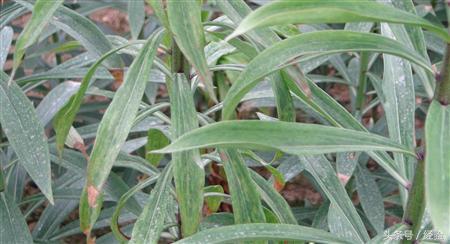
(2) Lily virus disease:
The damaged plants of lily virus disease showed yellow leaves or yellow spots, yellow spots, acute defoliation, poor plant growth and atrophy. The buds are yellow and can not open, and in severe cases, the plants wither and die.
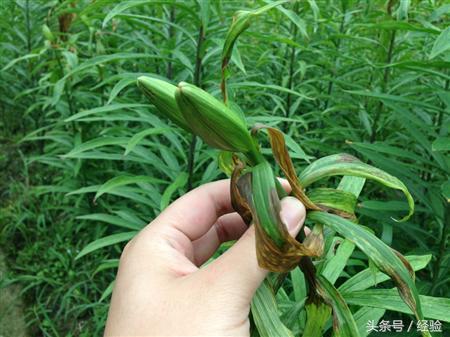
Virus disease control methods: ① breeding disease-resistant varieties or disease-free bulb propagation; ② to strengthen field management, appropriate application of phosphorus fertilizer and potassium fertilizer to make plants grow strong and enhance disease resistance; ③ pulled out seriously damaged plants to control aphids as early as possible to reduce the re-infection of infected aphids.
(3) Lily leaf blight and soft rot:
Lily leaf blight and soft rot are the main diseases in growing season and storage period, respectively.
Prevention and control methods of lily leaf blight and soft rot: select robust and disease-free bulbs to propagate, soak the seeds with 50% benzimidazole 500 ml 600 times solution for 30 minutes before sowing, and then soak the seeds after drying. Do not touch the bulb as much as possible during harvest and shipment, and pay attention to ventilation and cooling during storage.
(4) Common insect pests of lilies:
The common pests of lilies are aphids, beetle larvae and mites. Aphids harm, often clustered in the tender leaves and buds to absorb juice, so that the plant atrophy, poor growth, flowering and fruiting are affected.
Lily pest control methods:
① cleans the countryside, eradicates weeds in the field, and reduces the overwintering insect population; during the occurrence of ②, spraying pyrethrin 2000 times, or 40% omethoate 1500 times, or 50% malathion 1000 times, aphid lice net, great contribution.
Beetle larvae can use malathion and zinc parathion. Mites can be used as acaricides.
IV. Harvest and processing
From late July to early August, when the aboveground part of the plant withered and the bulb was fully mature, it was harvested in sunny days. After harvest, the aboveground part, whisker root and seed root are removed and stored in a ventilated place. The lilies used for keeping seeds had better stay in the ground and sow while digging, selecting and sowing after autumn. It can also be dried slightly after harvest and accumulated in a layer of dry sand.
- Prev
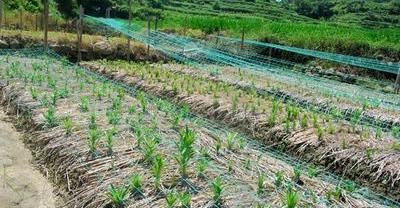
What are the points for attention in growing orchids?
Planting some flowers at home can not only decorate the space very well, but also make the air of the space clearer. But how do we grow them?
- Next
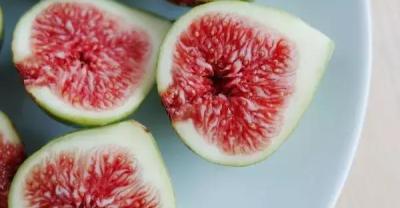
Cultivation techniques and field management of celery
Celery is nutritious. It is determined that every 100 grams of edible part contains 0.7 grams of protein, 0.1 grams of fat, 5.0 grams of carbohydrates, 37.0 milligrams of calcium and 1 mg of iron.
Related
- Fuxing push coffee new agricultural production and marketing class: lack of small-scale processing plants
- Jujube rice field leisure farm deep ploughing Yilan for five years to create a space for organic food and play
- Nongyu Farm-A trial of organic papaya for brave women with advanced technology
- Four points for attention in the prevention and control of diseases and insect pests of edible fungi
- How to add nutrient solution to Edible Fungi
- Is there any good way to control edible fungus mites?
- Open Inoculation Technology of Edible Fungi
- Is there any clever way to use fertilizer for edible fungus in winter?
- What agents are used to kill the pathogens of edible fungi in the mushroom shed?
- Rapid drying of Edible Fungi

